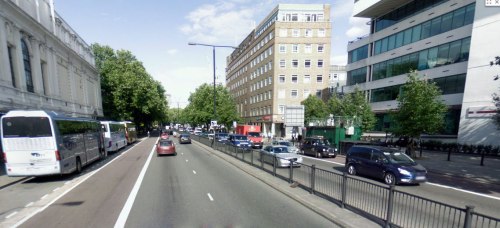I wish I could believe everything the Mayor and his team tell me. If there’s one thing that Boris Johnson is good at, it’s making promises.
TfL have recently produced this video about their vision for cycling in London. And it sounds wonderful. Oh, the things they say!
Doesn’t it all sound great?
“The Mayor plans to transform provisions for cycling … Investing in cycling makes life better for everyone … We’re spending almost a billion pounds … In London, 4.3 million trips made every day could be made by bike … The streets of central London will be opened up to cyclists as never before … A network of cycle routes will cover central London like a grid … In outer London the vast majority of journeys by car are less than a mile and a half … The idea is to make [the “mini-Holland”] boroughs places as good for cycling as their Dutch equivalents would be … An 8-to-80 cycling culture throughout London … A city where people feel safer cycling, feel confident cycling, and choose to cycle because they really enjoy the experience … London will be a city with a world-class transport and cycling network … Cycling is hugely important…”
And such inspirational music too!
Unfortunately, I don’t believe them. It’s nothing but propaganda and hype, and the cracks are already visible.
Despite these fine words, the plans are already failing to live up to the promises made.
The biggest let-down is the proposed Central London Grid – it’s rubbish. It’s not even a grid!
If you read David Hembrow’s articles on the grid concept, you’ll see that what’s required is a dense network of cycle routes, enabling anyone to cycle from anywhere to anywhere else. That isn’t what we have here.
The grid that isn’t
What TfL have done here is design a network patchwork that affects motoring as little as possible. (In fact, I wouldn’t be surprised if that was the wording of the design brief.)
It includes Hyde Park (which closes at midnight) and Kensington Gardens (which closes at dusk!), and includes bits of canal towpath (which are narrow, and dark at night). This isn’t a grid, it’s a joke.
Don’t kid yourself – the reason Gilligan loves the “quietways” concept so much is not because they’re great for cycling, but because they don’t get in the way of all-important motor traffic.
It’s been tried before, and is proven to be a failed concept. How is this convoluted patchwork of back-streets any different from the half-hearted LCN?

I’ve updated the Royal Parks to reflect their part-time status, and changed a canal route to grey to reflect the lack of social safety.
You’ll note that motor vehicles remain on the straightest, most convenient and most desirable routes, which TfL directly control. This so-called grid for cycling shows only convoluted back-street routes on borough roads, and you know that Westminster will do all they can to prevent any real change for the better on their roads.
And remember: this is their opening gambit! It’s not going to get better from here, only more and more watered down. If this is their dream plan, then the bold promises made in the video have already turned to ashes.
Why are TfL expecting the borough councils to handle all the cycle traffic on these back streets? What about Euston Road, a TfL-controlled 6 lane-wide motorway which cuts across the city from Paddington to Angel? Why is nothing being done there, or on any of the other multi-lane direct roads under TfL’s control?
You can send TfL your thoughts on their grid attempt until 14th of February using this email address: grid@tfl.gov.uk.
London is very, very far away from Holland
I’d also like to touch upon the “Mini-Holland” proposals. I can’t claim to have read all of them in detail, but I have been through most of the shortlisted ones, and I can say this: Andrew Gilligan’s promises are already broken.
This is because even the best of these “Mini-Holland” proposals will not in any way create conditions “as good for cycling as their Dutch counterparts” – every one of them falls short in some major way.
Don’t get me wrong, some of the proposals do include some positive changes which should be welcomed. But they’re all piecemeal solutions. Not one of them proposes doing “everything, everywhere” which is required to make these places “every bit as cycle-friendly as their Dutch equivalents.”
All of the proposals are at least a little bit disappointing in their failure to really understand what makes Dutch cycling conditions so safe and inviting.
All the proposals feature brand new ASLs as some sort of solution. Many of them misinterpret Dutch practice and apply it to unsuitable roads. Some of them focus largely on leisure routes. All of them bang on about soft measures such as bike maintenance classes or poster campaigns. The London borough councils really need to go on a Hembrow Study Tour, as they clearly only have the vaguest idea of what Dutch cycling infrastructure actually is.
Maybe I’ll write more about the Mini-Holland proposals once the final decision is made about which boroughs have won the mini pot of gold (as there’ll be less waffle to wade through once they’ve chosen the winners).
But for now, I’ll leave you with Enfield’s vision of good-quality Dutch cycling infra, which is so awful that it probably warrants a blog post all of its own:




 The Alternative Department for Transport is written by, and the personal opinion of,
The Alternative Department for Transport is written by, and the personal opinion of, 


